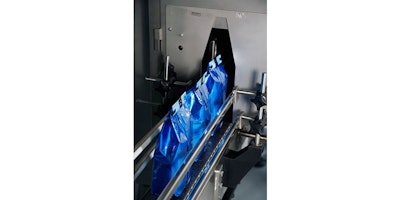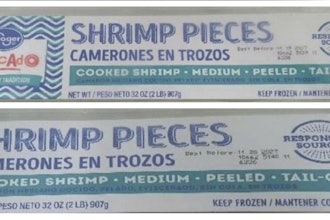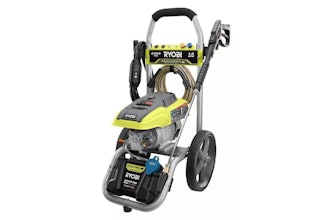
 Eagle Product Inspection
Eagle Product InspectionTrends in the food manufacturing industry are driven by retailers’ needs to improve both sustainability and marketability. Consumers are demanding more and more in terms of green credentials and it falls to food manufacturers to find ways to respond in order to stay aligned.
The need for a packaging format with the ability to increase shelf sustainability, while providing an attractive platform for brand messaging, was very clear and came in the form of metalized film coated polymers.
Traditional films such as regular clear barrier packaging are susceptible to light, and it is this, as well as moisture and oxygen content, that leads to premature staling. Metalized films create an effective light barrier, which keeps UV and visible light from attacking the oils within the product itself, causing them to turn rancid at an accelerated rate. Oxygen and moisture are also dealt with far more effectively with metalized films as it is a much harder barrier to penetrate.
Increasingly, these metalized films are used within stand-up pouches, a popular packaging format within the snacks sector — for items such as cookies, nuts and dried fruits — but also within the wider food industry, for cereal items like granola and muesli, or for stir-in sauces, for example.
These pouches, aside from their excellent barrier properties that lead to longer shelf sustainability, also open up a wider range of decoration options, making them highly desirable among product marketers.
Challenges to Manufacturers
For consumers and retailers, metalized pouches are a fantastic prospect, as we have seen from the advantages above, but for manufacturers they pose a different challenge — that of product inspection.
A large number of manufacturers — including many small contract operations — have historically relied on metal detection as a means of inspection. With the rising demand for products packaged within metalized, film-coated pouches, it is challenging for metal detection systems to meet the specifications required by retailers for this format.
Vision inspection is not a possibility, as the packages are not clear, therefore X-ray is the most viable option. Manufacturers looking to continue to supply major retailers, including the smaller contractors, who collectively make up a large section of the industry, must therefore prepare to move towards this technology or face lost revenue through simply being unable to meet the required specifications.
The Advantages of X-ray
Metalized film poses no challenges for X-ray inspection systems in any size or format. As the films themselves have very little absorbance value, the X-ray is not affected by the packaging, meaning retailers’ specifications can be met and surpassed with ease. Metal detectors use magnetic field displacement, so the packaging actually works against the detection specification.
When compared with metal detectors, X-ray has a number of benefits over and above its ability to offer superior detection. X-ray, in addition to metal, is also capable of detecting several other physical contaminants, such as glass, stones, dense plastic and rubber components, as well as calcified bone. X-ray systems also have the capability to perform quality checks on the production line, making total cost of ownership and return on investment figures more attractive than single function systems, as they have the ability to detect gross under or overfills or missing components, for example.
While it is never ideal to be told by retailers that you must invest in a technology, the fact remains that they are highly likely to walk away from those companies who simply cannot meet their specifications. A nut manufacturer in the U.S., for example, said that they do not have a choice about investing in X-ray, as a leading retailer has refused to use them unless they do so, and this stance continues all the way down to the smaller contract manufacturers.
This hard-line policy is driven, in part, by the fierce safeguarding of brand reputation by retailers, who would be in the line of fire should a contaminated product reach a consumer via their outlet. Social media channels have made it much easier for both positive and negative stories to circulate worldwide, and in some cases such an event could also have litigious consequences.
As a result of this, retailers have strict policies when it comes to contaminant detection and the trend for more stringent specifications looks set to continue as greater focus is being placed on preventing product recalls. The ability to meet and exceed retailers’ expectations is essential for contract wins and retention. For manufacturers, peace of mind can be achieved through investing in a technology such as X-ray, which not only ensures continued compliance with evolving specifications through its capabilities, but also adds several layers of benefit to production lines and overall productivity.






















